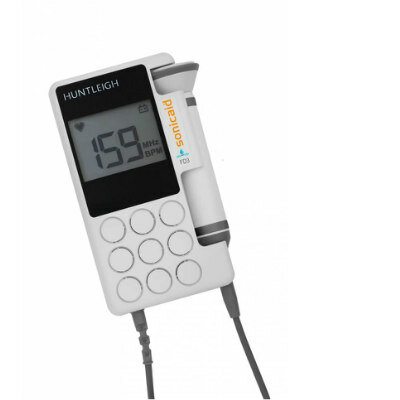Prototype of Virtual Reality Device with Potential for Diagnostic Imaging Presented
|
By MedImaging International staff writers Posted on 05 Jan 2016 |

Image: Photo of the virtual reality device mobile diagnostic imaging (Photo courtesy of RSNA).
A prototype of a high-resolution mobile Virtual Reality (VR) diagnostic imaging device for radiologists was presented at the annual Radiological Society of North America (RSNA 2015) meeting in Chicago (IL, USA).
The researchers investigated whether VR visualization could be useful for diagnostic imaging without sacrificing the quality and stability of Digital Imaging and Communications in Medicine (DICOM) images. The researchers also tested the feasibility of remote diagnosis of complete Computed Tomography (CT) exams using a mobile VR system.
The study of the prototype VR system, powered by a smartphone with an ultra-high-density 550 ppi display, was carried out by researchers from the Evangelismos Hospital (Athens, Greece). The researchers began by testing the system using CT images. Two radiologists, a consultant in the hospital, and a radiologist in another area of the hospital, reviewed 271 CT exams using remote VR. The two reports were compared using standardized reporting systems. The researchers assessed imaging quality of the VR system, compared to the hospital's workstation, in the independent, double-blinded reports. The two radiologists showed agreement in 97.27% of the results. The remaining contradicting results also showed discrepancies between radiologists on the same monitor. The results showed that in most of the parameters evaluated by the researchers, there was good inter-observer agreement, and the use of the VR system did not affect image quality, or alter the diagnosis.
Dr. Moustakas, radiologist at the Evangelismos Hospital, said, “Using the system is like being in front of a 175-inch mega screen while enabling visualization at 360 degrees. Once the DICOM images are downloaded, the user wears the device and can scroll through the images, viewing up to 56 at any time—all while being on the move. It is very easy to use. Once the files are downloaded it takes less than a minute to wear the VR device and start viewing the CT images. The fact that it's also mobile is crucial, because this technique can be used for remote diagnosis, avoiding the limitations of the relatively small displays of normal mobile devices. The main drawbacks until now were mobility and display resolution, but our system resolves both, but the potential advantages are boundless”.
Related Links:
Evangelismos Hospital
The researchers investigated whether VR visualization could be useful for diagnostic imaging without sacrificing the quality and stability of Digital Imaging and Communications in Medicine (DICOM) images. The researchers also tested the feasibility of remote diagnosis of complete Computed Tomography (CT) exams using a mobile VR system.
The study of the prototype VR system, powered by a smartphone with an ultra-high-density 550 ppi display, was carried out by researchers from the Evangelismos Hospital (Athens, Greece). The researchers began by testing the system using CT images. Two radiologists, a consultant in the hospital, and a radiologist in another area of the hospital, reviewed 271 CT exams using remote VR. The two reports were compared using standardized reporting systems. The researchers assessed imaging quality of the VR system, compared to the hospital's workstation, in the independent, double-blinded reports. The two radiologists showed agreement in 97.27% of the results. The remaining contradicting results also showed discrepancies between radiologists on the same monitor. The results showed that in most of the parameters evaluated by the researchers, there was good inter-observer agreement, and the use of the VR system did not affect image quality, or alter the diagnosis.
Dr. Moustakas, radiologist at the Evangelismos Hospital, said, “Using the system is like being in front of a 175-inch mega screen while enabling visualization at 360 degrees. Once the DICOM images are downloaded, the user wears the device and can scroll through the images, viewing up to 56 at any time—all while being on the move. It is very easy to use. Once the files are downloaded it takes less than a minute to wear the VR device and start viewing the CT images. The fact that it's also mobile is crucial, because this technique can be used for remote diagnosis, avoiding the limitations of the relatively small displays of normal mobile devices. The main drawbacks until now were mobility and display resolution, but our system resolves both, but the potential advantages are boundless”.
Related Links:
Evangelismos Hospital
Latest Imaging IT News
- New Google Cloud Medical Imaging Suite Makes Imaging Healthcare Data More Accessible
- Global AI in Medical Diagnostics Market to Be Driven by Demand for Image Recognition in Radiology
- AI-Based Mammography Triage Software Helps Dramatically Improve Interpretation Process
- Artificial Intelligence (AI) Program Accurately Predicts Lung Cancer Risk from CT Images
- Image Management Platform Streamlines Treatment Plans
- AI-Based Technology for Ultrasound Image Analysis Receives FDA Approval
- AI Technology for Detecting Breast Cancer Receives CE Mark Approval
- Digital Pathology Software Improves Workflow Efficiency
- Patient-Centric Portal Facilitates Direct Imaging Access
- New Workstation Supports Customer-Driven Imaging Workflow
Channels
Radiography
view channel
Novel Breast Imaging System Proves As Effective As Mammography
Breast cancer remains the most frequently diagnosed cancer among women. It is projected that one in eight women will be diagnosed with breast cancer during her lifetime, and one in 42 women who turn 50... Read more
AI Assistance Improves Breast-Cancer Screening by Reducing False Positives
Radiologists typically detect one case of cancer for every 200 mammograms reviewed. However, these evaluations often result in false positives, leading to unnecessary patient recalls for additional testing,... Read moreMRI
view channel
PET/MRI Improves Diagnostic Accuracy for Prostate Cancer Patients
The Prostate Imaging Reporting and Data System (PI-RADS) is a five-point scale to assess potential prostate cancer in MR images. PI-RADS category 3 which offers an unclear suggestion of clinically significant... Read more
Next Generation MR-Guided Focused Ultrasound Ushers In Future of Incisionless Neurosurgery
Essential tremor, often called familial, idiopathic, or benign tremor, leads to uncontrollable shaking that significantly affects a person’s life. When traditional medications do not alleviate symptoms,... Read more
Two-Part MRI Scan Detects Prostate Cancer More Quickly without Compromising Diagnostic Quality
Prostate cancer ranks as the most prevalent cancer among men. Over the last decade, the introduction of MRI scans has significantly transformed the diagnosis process, marking the most substantial advancement... Read moreUltrasound
view channel
Deep Learning Advances Super-Resolution Ultrasound Imaging
Ultrasound localization microscopy (ULM) is an advanced imaging technique that offers high-resolution visualization of microvascular structures. It employs microbubbles, FDA-approved contrast agents, injected... Read more
Novel Ultrasound-Launched Targeted Nanoparticle Eliminates Biofilm and Bacterial Infection
Biofilms, formed by bacteria aggregating into dense communities for protection against harsh environmental conditions, are a significant contributor to various infectious diseases. Biofilms frequently... Read moreNuclear Medicine
view channel
New SPECT/CT Technique Could Change Imaging Practices and Increase Patient Access
The development of lead-212 (212Pb)-PSMA–based targeted alpha therapy (TAT) is garnering significant interest in treating patients with metastatic castration-resistant prostate cancer. The imaging of 212Pb,... Read moreNew Radiotheranostic System Detects and Treats Ovarian Cancer Noninvasively
Ovarian cancer is the most lethal gynecological cancer, with less than a 30% five-year survival rate for those diagnosed in late stages. Despite surgery and platinum-based chemotherapy being the standard... Read more
AI System Automatically and Reliably Detects Cardiac Amyloidosis Using Scintigraphy Imaging
Cardiac amyloidosis, a condition characterized by the buildup of abnormal protein deposits (amyloids) in the heart muscle, severely affects heart function and can lead to heart failure or death without... Read moreGeneral/Advanced Imaging
view channel
New AI Method Captures Uncertainty in Medical Images
In the field of biomedicine, segmentation is the process of annotating pixels from an important structure in medical images, such as organs or cells. Artificial Intelligence (AI) models are utilized to... Read more.jpg)
CT Coronary Angiography Reduces Need for Invasive Tests to Diagnose Coronary Artery Disease
Coronary artery disease (CAD), one of the leading causes of death worldwide, involves the narrowing of coronary arteries due to atherosclerosis, resulting in insufficient blood flow to the heart muscle.... Read more
Novel Blood Test Could Reduce Need for PET Imaging of Patients with Alzheimer’s
Alzheimer's disease (AD), a condition marked by cognitive decline and the presence of beta-amyloid (Aβ) plaques and neurofibrillary tangles in the brain, poses diagnostic challenges. Amyloid positron emission... Read more.jpg)
CT-Based Deep Learning Algorithm Accurately Differentiates Benign From Malignant Vertebral Fractures
The rise in the aging population is expected to result in a corresponding increase in the prevalence of vertebral fractures which can cause back pain or neurologic compromise, leading to impaired function... Read moreIndustry News
view channel
Bayer and Google Partner on New AI Product for Radiologists
Medical imaging data comprises around 90% of all healthcare data, and it is a highly complex and rich clinical data modality and serves as a vital tool for diagnosing patients. Each year, billions of medical... Read more



















